If you come attached with a heavy interest in the world of smartphones and tablets, then the chances are that you’ll already be well aware that Android N was officially announced recently by Google. As consumer tech fans rush to download it and get it installed on test devices around the world, we’re going to take a little look at five features that you could be forgiven for thinking have been “borrowed” directly from Apple’s iOS. So without further ado, lets just drill down to the features that Google has copied from iOS 9 in its latest Android N.
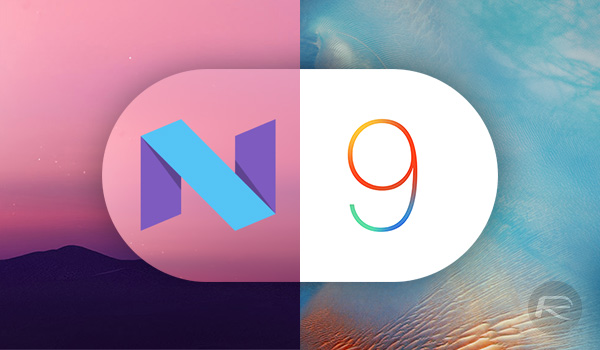
Split View (iOS) Vs. Multi-Window (Android)
Google may be slated for copying Apple’s interpretation of Split View which was introduced with iOS 9 in 2015, but it could actually be said that Apple may have first borrowed this type of feature integration from Microsoft’s Windows 8.
Having said that, Apple’s Split View allows apps to run side-by-side on the iPad only whereas Google’s Android N Multi-Window works across both smartphones and tablets. Here’s what they both look like:
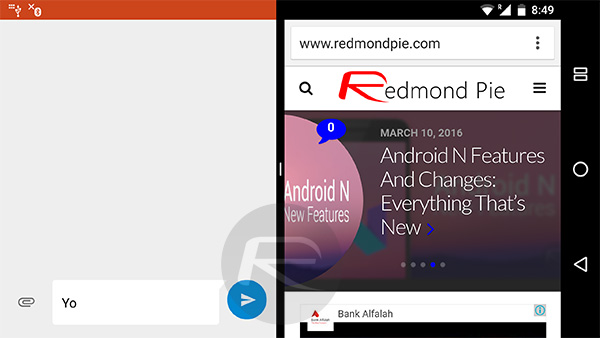
Android N Multi-Window
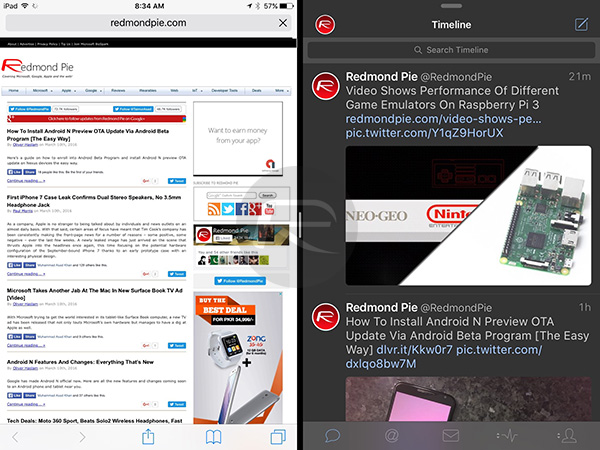
iOS 9 Split View
Picture-in-Picture (iOS) Vs. Picture-in-Picture (Android)
Picture-in-Picture doesn’t really need any introduction. Apple introduced the highly sought after Picture-in-Picture functionality for playing videos in a floatable window system-wide with the release of iOS 9 last year for iPads. The company’s implementation of that feature is currently only available on iPads whereas Android’s new feature currently only works with the Android TV version of N. Both are excellent, but both clearly come with device limitations. Maybe Apple will add PiP to tvOS in the next major update? Hope they do!
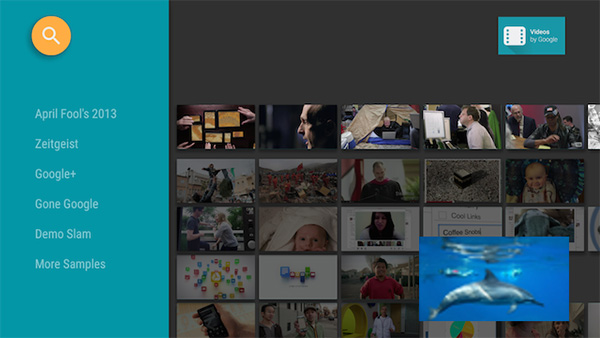
Android N Picture-in-Picture on Android TV
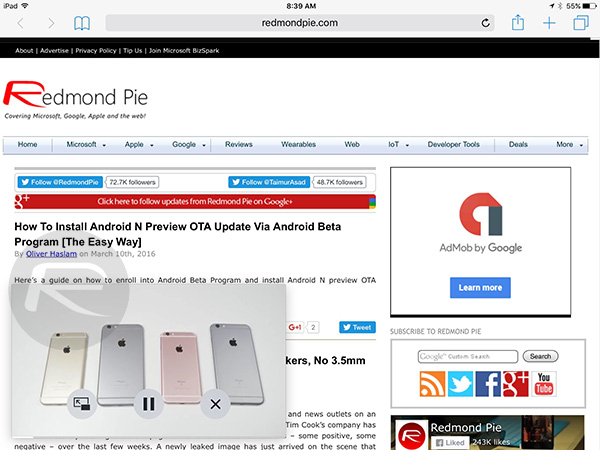
iOS 9 Picture-in-Picture on iPad
Night Shift (iOS) Vs. Night Mode (Android)
Night Shift in iOS was introduced with iOS 9.3 earlier this year, and it works in a similar fashion to the excellent third-party app called f.lux app by allowing the color temperature of the display to be changed at various times throughout the day. Android N now takes cues from that by adding a similar functionality to the updated Night Mode feature. While Android N’s Night Mode, like Android Marshmallow’s, also let users optionally set gray background over white text, there’s now also the new option of enabling a red tint on the overall display like iOS 9’s Night Mode.

Night Mode in Android N
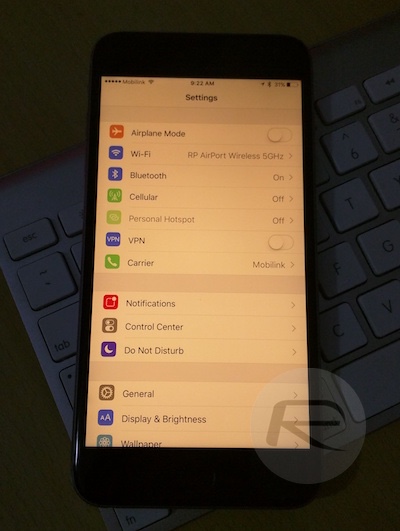
Night Shift in iOS 9.3
Quick Reply (iOS) Vs. Direct Reply (Android)
Apple initially introduced Quick Reply in iOS with the release of iOS 8 back in 2014, but that only applied to stock Apple apps. It was then opened up to third-party apps with iOS 9 in 2015, allowing incoming messages and more to be replied to directly from the notification. Android N offers the exact same functionality by allowing the user to reply directly from the Notification Shade. Same thing, just under the Direct Reply moniker.

Android N’s Direct Reply

Quick Reply in iOS
Notifications: Group By App (iOS) Vs. Bundled Notifications (Android)
Notifications are an extremely important part of any smartphone or tablet experience. Pretty much most apps that offer any kind of dynamic nature introduce some kind of notification at one point or another to keep users engaged. Apple’s iOS optionally let users group app notifications together to keep everything in one place within Notification Center. This setting can be found in iOS under Settings > Notifications > Notifications View > Group By App. Android N, well, as you might have guessed, essentially does exactly the same thing with Bundled Notifications.
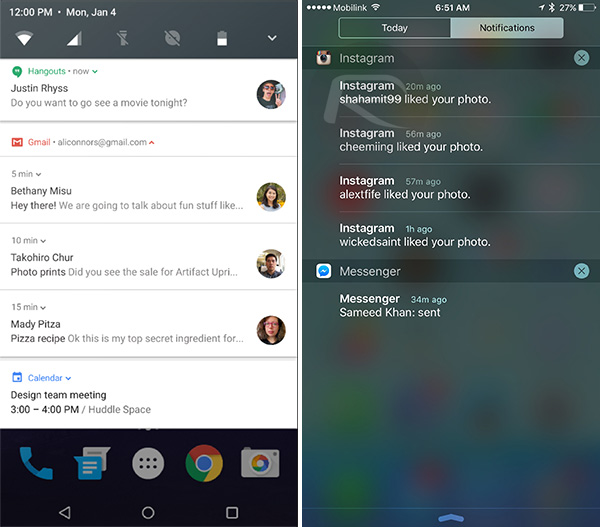
Android N Bundled Notifications on left vs iOS Group By App Notifications on right
The thing that we actually need to remember here and take into account is that there’s really only a finite number of features and inclusions that you can introduce into a platform every year. It’s common sense to expect that companies will borrow inspiration and feature sets from one another every now and then. Apple has done the same by taking some features from Android over the years as well as the jailbreak community, as has Google. This year it seems like it’s Android’s turn to play catch up again and take some inspiration from Apple’s progression of iOS. In the end, consumers are the real beneficiaries of the competition.
You may also like to check out:
- How To Install Android N Preview OTA Update Via Android Beta Program [The Easy Way]
- Android N Features And Changes: Everything That’s New
- iOS 9.3.1 / 9.3 Jailbreak For iPhone And iPad [Status Update]
You can follow us on Twitter, add us to your circle on Google+ or like our Facebook page to keep yourself updated on all the latest from Microsoft, Google, Apple and the Web.

